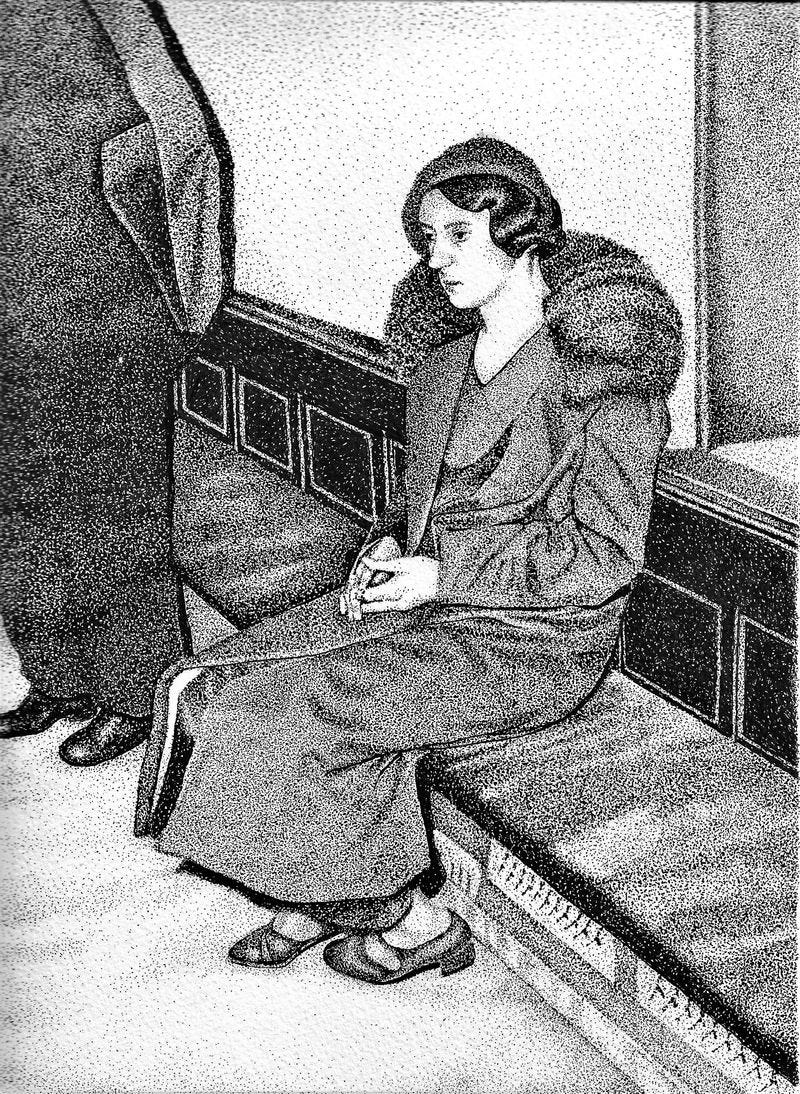Exclusive preview: "Women & Art: A Post-Feminist View"
In this post, I reveal some exclusive content from my new book, launched on Monday (2 August).
Alexander Adams, Women & Art: A Post-Feminist View, Academica Press, Washington DC, 1 August 2022, hardback, 272pp, mono illus. (illus. by the author), index, $49.95 (Kindle also available)
On Monday my newest and most controversial book will be published. Over the years I have often written as a critic about women in the arts: as artists, models, muses, collectors, administrators and writers. I have considered them simply in their roles and as individuals. I have never considered women artists as members of a group distinct from their male counterparts except when they have been presented as such – either by themselves (individually or collectively) or by others, in the form of exhibitions or publications. The reason is simple. I have not up to now seen in art a tendency which distinguishes female artists from male artists. As an art critic, my discussions have been of art not artists.
The programming, promotion and production of art grounded in feminist critiques has prompted me to write Women & Art. The steady stream of publications and exhibitions framed by feminism has made it hard to avoid such attitudes; when museum policy and exhibition quotas impose these approaches, it is impossible to do so. Therefore, it seemed necessary to tackle the impact on art of feminist interpretation and feminist production directly in a series of essays and reviews, which form the basis for this book.
In Women & Art I examine the truths and myths that underpin analysis of women in fine art. Were women artists discriminated against? Does the art market prove prejudice? Are women being excluded from the canon? Have women been erased from art history? Does a distinctly female art exist? Could positive discrimination improve the standing of women artists? I examine feminist texts first hand to summarise their arguments fairly, then I look at the data and current practice. Find out where I agree and disagree with feminist art historians. I look at some fascinating women who have appeared in art history - Camille Claudel, Tamara de Lempicka, Mary Cassatt, Elisabeth Vigée Le Brun. Why is Ana Mendieta seen as a martyr by feminists? How did a murderess end up a Surrealist muse? Two essays study how women were treated in art - and how they functioned as artists - in the USSR and Nazi Germany.
Here is an extract from the chapter on the iconography of feminism:
“These symbolic figures feature prominently in feminist art history and the production of feminist art. Feminism is not synonymous with women. There are certain representations of women that are seen as degrading for feminists: the prostitute, the pornographic actress, the submissive sexual partner, the passive partner, the scolding wife, the village gossip and the domesticated housewife. Some images indicate the social plight of the woman historically: “the waiting woman in courtship, the dutiful wife in her self-enclosed “prison” of domesticity, and even the sempstress and the harlot”. Portraits of the nobility and bourgeois incite class scorn. Other images of the nun, the slave owner, the colonial wife and the military wife are difficult for feminists not because of feminist theory but because they intrude into territory such as religion, colonialism, militarism and history which are territories critiqued by allied ideologies to which feminists often subscribe. […]
“Another icon that is difficult for feminists to reconcile themselves with is the witch. The witch is traditionally seen as a negative stereotype of the hag spreading malaise and devilry within her community, taking the manifestations of anything from sickness and insanity to crop failure. Witchery is not a distinctly female activity, as anthropology documents. However, in the European-American tradition witchcraft is associated more commonly with women than men – a fact that is sometimes viewed as a reflection of status. The mystical branch of feminism sees the witch as a female outcast, misfit, sage of folk wisdom and rebel against the patriarchal conformity of Christianity. The witch is a lingering vestige of paganism, nature worship and the ancient cult of matriarchal religions of prehistory. As such, this avatar of female power – able to inspire fear and wonder in conventional society – becomes a heroic figure. Consequently, the witch is a figure celebrated by some feminists as symbol of rebellious dissent and decried by others as an avatar of misogyny. On a more humanistic level, the incident of a woman persecuted elicits sympathy. By either pro or contra reading, the witch is a potent example of the female experience for both feminists and women generally.”
A series of pieces finish the book: a data list of opportunities open to women artists from the Renaissance period to 1910; two translations make available in English for the first time key texts by Marie Bashkirtseff, a pioneering woman painter. With new data, an extensive bibliography and over 500 footnotes, this book may change your assumptions about the relationship between women and art.
[Alexander Adams, illustration from Women & Art]
Contents:
Introduction; 1. A History of Women Artists; 2. Woman as Muse; 3. Feminisms, Art and New Criticism; 4. The Exclusion Fallacy; 5. Prices and Quotas; 6. New Facts and Figures; 7. Women Artists or Women’s Art? Essays: City of Women/Stadt der Frauen 1900-1938; Bauhäuslerinen; Women as Creators and Subjects in Soviet Art; Women in National Socialist Art; Conclusions; Appendices, A. Chronology of education and exhibition opportunities for women artists before 1910; B. Two texts by Marie Bashkirtseff; C. Methodology of data collection for “Women in the Arts, 2018-9”; Bibliography; Index
Available for sale worldwide via bookshops and online booksellers. Buy from the publisher here: https://www.academicapress.com/node/536
You can contact me via Twitter direct message or here (https://www.alexanderadams.art/contact) to buy signed copies.




